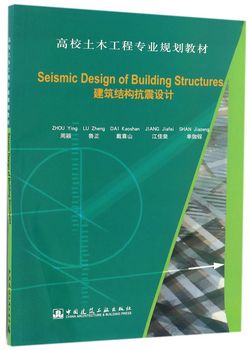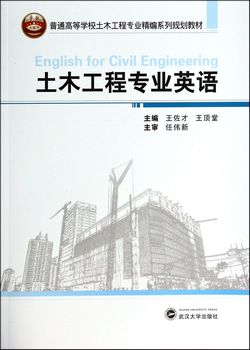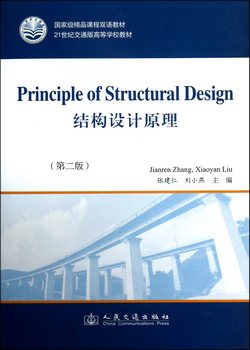- 科学出版社
- 9787030329998
- 1-1
- 125367
- 49157644-3
- 平装
- 16开
- 2012-01
- 400
- 276
- 农学
- 农业资源与环境
- S181
- 农学、环境科学等
内容简介
王松良、S.基利尼克等编著的这本《农业生态学》是国家双语教学示范课程的配套教材,也是“(中国)福建农林大学-(加拿大)新斯科舍农学院‘2+2’本科教学合作项目”的成果之一。本书紧紧围绕“农业是把太阳光转变成人们健康、幸福生活的科学、艺术、政治学和社会学”这一对“农业”的新理解,把“农业生态学”定义为农学与生态学联姻的学科和实现农业生态系统可持续管理的应用科学。主要介绍农业生态学的学科内涵、农业生态系统的基本过程及其人为问题、可持续农业生态系统的构建与管理等内容,并包括该课程系列实践教学指导书。
《农业生态学》视角独特,图文并茂,适合于高等农林院校同名课程的双语教学用书,也可作为农业院校和科研院所研究生考试的参考书。
《农业生态学》视角独特,图文并茂,适合于高等农林院校同名课程的双语教学用书,也可作为农业院校和科研院所研究生考试的参考书。
目录
Preface Agroecology: A Discipline for Our Time
Part 1 Theoretical Framework
Unit 1 Context of Agroecology
Chapter 1 Agriculture and its anthropocentric sciences
1.1 What are agriculture, ecology and agroecology?
1.2 Natural ecosystems versus people-centric ecosystems and agroecosystems
1.3 "Making money and respecting the environment"
1.4 What we produce is determined by what we consume: Rethinking therole of the modern supermarketLiteratures cited in this chapter
Chapter 2 Agroecology: Science of synthesis of ecology and agriculture
2.1 Agroecology: Bridging ecology and agronomy
2.2 Agroecology: The ecology of food systems
2.3 Global food system: Two case analyses of basic agroecologyLiteratures cited in this chapter
Unit 2 Basic Analysis of Agroecosystems
Chapter 3 Agroecosystem and its analysis
3.1 What is an agroecosystem?
3.2 The hierarchies of agroecosystems
3.3 The properties of agroecosystems
3.4 Agroecosystem analysis ,Literatures cited in this chapter
Chapter 4 Energy flow and matter cycle in agroecosystems
4.1 Energy flow and matter cycle in a natural ecosystem
4.2 Energy flow in agroecosystems
4.3 Matter cycle in agroecosystems
Literatures cited in this chapter
Chapter 5 Agroclimate and agriculture's roles in global climate change
5.1 Climate change, global warming and its trends
5.2 Agroclimate and climate change related to agriculture
5.3 Adaptation and mitigation to the climate change in agriculture
Literatures cited in this chapter
Chapter 6 Water in agroecosystems
6.1 Water resources in the global ecosystem
6.2 Water in agroecosystems
6.3 Aspects of water management in agroecosystems
Literatures cited in this chapter
Chapter 7 Cultivated soils and soil organisms
7.1 Formation, classification and functions of soils
7.2 Soil nutrient cycling
7.3 Soil management in agricultureLiteratures cited in this chapter
Chapter 8 Agrobiodiversity and agroecosystem stability
8.1 Biodiversity
8.2 Biodiversity in agroecosystems
8.3 Regenerating biodiversity in agroecosystems
Literatures cited in this chapter
Unit 3 Agroecosystematic Processes and TheirAnthropocentric Problems
Chapter 9 Land preparation
9.1 The functions of land preparation
9.2 The procedures of land preparation
9.3 Tillage system
Literatures cited in this chapter
Chapter 10 Erosion and soil degradation: "Keep your soil covered"
10.1 Soil erosion
10.2 Land degradation
10.3 Keep your soil covered
Literatures cited in this chapter
Chapter 11 Resources and wastes in agroceosystems
11.1 What are resources and wastes in agroecosystems7
11.2 Animal and plant manures
11.3 Compost: Making and using it
Literatures cited in this chapter
Chapter 12 Natural capital accounting: Ecological footprint and emergy analysis
12.1 Ecological footprint (EF) : concept and calculation
12.2 Emergy analysis
12.3 Modified method of natural capital accounting
Literatures cited in this chapter
Unit 4 Sustainable Production Systems
Chapter 13 Domestic livestock systems
13.1 Domestication and evolution of agriculture
13.2 Animal production and products
13.3 Efficiency in animal production
Literatures cited in this chapter
Chapter 14 Aquaculture systems
14.1 Is aquaculture important to world food production?
14.2 The role of aquaculture in human nutrition
14.3 The fish species from east to west
14.4 Methods and energy efficiency of aquaculture
14.5 Sustainable aquaculture systems
Literatures cited in this chapter
Chapter 15 Cereal-based cropping systems
15.1 Why are seeds of cereal so great?
15.2 Cereals for food and feed
15.3 Cereal-based cropping systems
Literatures cited in this chapter
Chapter 16 Vegetable-based production systems
16.1 The roles of vegetable in human development
16.2 Vegetable production: Global and regional
16.3 Scientific aspects of vegetable
Part 1 Theoretical Framework
Unit 1 Context of Agroecology
Chapter 1 Agriculture and its anthropocentric sciences
1.1 What are agriculture, ecology and agroecology?
1.2 Natural ecosystems versus people-centric ecosystems and agroecosystems
1.3 "Making money and respecting the environment"
1.4 What we produce is determined by what we consume: Rethinking therole of the modern supermarketLiteratures cited in this chapter
Chapter 2 Agroecology: Science of synthesis of ecology and agriculture
2.1 Agroecology: Bridging ecology and agronomy
2.2 Agroecology: The ecology of food systems
2.3 Global food system: Two case analyses of basic agroecologyLiteratures cited in this chapter
Unit 2 Basic Analysis of Agroecosystems
Chapter 3 Agroecosystem and its analysis
3.1 What is an agroecosystem?
3.2 The hierarchies of agroecosystems
3.3 The properties of agroecosystems
3.4 Agroecosystem analysis ,Literatures cited in this chapter
Chapter 4 Energy flow and matter cycle in agroecosystems
4.1 Energy flow and matter cycle in a natural ecosystem
4.2 Energy flow in agroecosystems
4.3 Matter cycle in agroecosystems
Literatures cited in this chapter
Chapter 5 Agroclimate and agriculture's roles in global climate change
5.1 Climate change, global warming and its trends
5.2 Agroclimate and climate change related to agriculture
5.3 Adaptation and mitigation to the climate change in agriculture
Literatures cited in this chapter
Chapter 6 Water in agroecosystems
6.1 Water resources in the global ecosystem
6.2 Water in agroecosystems
6.3 Aspects of water management in agroecosystems
Literatures cited in this chapter
Chapter 7 Cultivated soils and soil organisms
7.1 Formation, classification and functions of soils
7.2 Soil nutrient cycling
7.3 Soil management in agricultureLiteratures cited in this chapter
Chapter 8 Agrobiodiversity and agroecosystem stability
8.1 Biodiversity
8.2 Biodiversity in agroecosystems
8.3 Regenerating biodiversity in agroecosystems
Literatures cited in this chapter
Unit 3 Agroecosystematic Processes and TheirAnthropocentric Problems
Chapter 9 Land preparation
9.1 The functions of land preparation
9.2 The procedures of land preparation
9.3 Tillage system
Literatures cited in this chapter
Chapter 10 Erosion and soil degradation: "Keep your soil covered"
10.1 Soil erosion
10.2 Land degradation
10.3 Keep your soil covered
Literatures cited in this chapter
Chapter 11 Resources and wastes in agroceosystems
11.1 What are resources and wastes in agroecosystems7
11.2 Animal and plant manures
11.3 Compost: Making and using it
Literatures cited in this chapter
Chapter 12 Natural capital accounting: Ecological footprint and emergy analysis
12.1 Ecological footprint (EF) : concept and calculation
12.2 Emergy analysis
12.3 Modified method of natural capital accounting
Literatures cited in this chapter
Unit 4 Sustainable Production Systems
Chapter 13 Domestic livestock systems
13.1 Domestication and evolution of agriculture
13.2 Animal production and products
13.3 Efficiency in animal production
Literatures cited in this chapter
Chapter 14 Aquaculture systems
14.1 Is aquaculture important to world food production?
14.2 The role of aquaculture in human nutrition
14.3 The fish species from east to west
14.4 Methods and energy efficiency of aquaculture
14.5 Sustainable aquaculture systems
Literatures cited in this chapter
Chapter 15 Cereal-based cropping systems
15.1 Why are seeds of cereal so great?
15.2 Cereals for food and feed
15.3 Cereal-based cropping systems
Literatures cited in this chapter
Chapter 16 Vegetable-based production systems
16.1 The roles of vegetable in human development
16.2 Vegetable production: Global and regional
16.3 Scientific aspects of vegetable









